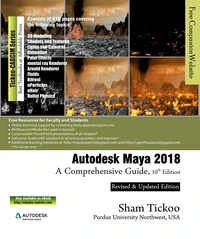Introduction to Java Programming, 2nd Edition
Par :Formats :
Disponible dans votre compte client Decitre ou Furet du Nord dès validation de votre commande. Le format ePub protégé est :
- Compatible avec une lecture sur My Vivlio (smartphone, tablette, ordinateur)
- Compatible avec une lecture sur liseuses Vivlio
- Pour les liseuses autres que Vivlio, vous devez utiliser le logiciel Adobe Digital Edition. Non compatible avec la lecture sur les liseuses Kindle, Remarkable et Sony
- Non compatible avec un achat hors France métropolitaine
 , qui est-ce ?
, qui est-ce ?Notre partenaire de plateforme de lecture numérique où vous retrouverez l'ensemble de vos ebooks gratuitement
Pour en savoir plus sur nos ebooks, consultez notre aide en ligne ici
- FormatePub
- ISBN978-1-386-48586-5
- EAN9781386485865
- Date de parution01/06/2017
- Protection num.Adobe DRM
- Infos supplémentairesepub
- ÉditeurRelay Publishing
Résumé
Introduction to Java Programming is an example based textbook, written to cater the needs of beginners and intermediate users who wish to understand the basic concepts of Java. The textbook highlights Java as the easiest and most productive tool for creating programs, including Windows-based and Web-based programs. The highlight of the textbook is that each concept introduced in it has been exemplified by a program to clarify and facilitate better understanding.
Also, the line-by-line explanation of each program ensures that the users with no previous programming experience are able to understand the concepts and master the programming techniques and use them with flexibility while designing programs. The main features of this textbook are as follows:Programming Approach: This textbook introduces the key ideas of object oriented programming in an intuitive way.
The concepts are illustrated through best programming examples. Notes: Additional information is provided to the users in the form of notes. Illustrations: There is an extensive use of examples, schematic representations, flowcharts, tables, screen capture images, and programming exercises. Learning Objectives: The first page of every chapter summarizes the topics that are covered in it. Self-Evaluation Test, Review Questions, and Exercises: Each chapter ends with Self-Evaluation Test so that the users can assess their knowledge.
The answers of Self-Evaluation Test are given at the end of the chapter. Also, the Review Questions and Exercises are given at the end of each chapter that can be used by the instructor as test questions and exercises.
Also, the line-by-line explanation of each program ensures that the users with no previous programming experience are able to understand the concepts and master the programming techniques and use them with flexibility while designing programs. The main features of this textbook are as follows:Programming Approach: This textbook introduces the key ideas of object oriented programming in an intuitive way.
The concepts are illustrated through best programming examples. Notes: Additional information is provided to the users in the form of notes. Illustrations: There is an extensive use of examples, schematic representations, flowcharts, tables, screen capture images, and programming exercises. Learning Objectives: The first page of every chapter summarizes the topics that are covered in it. Self-Evaluation Test, Review Questions, and Exercises: Each chapter ends with Self-Evaluation Test so that the users can assess their knowledge.
The answers of Self-Evaluation Test are given at the end of the chapter. Also, the Review Questions and Exercises are given at the end of each chapter that can be used by the instructor as test questions and exercises.
Introduction to Java Programming is an example based textbook, written to cater the needs of beginners and intermediate users who wish to understand the basic concepts of Java. The textbook highlights Java as the easiest and most productive tool for creating programs, including Windows-based and Web-based programs. The highlight of the textbook is that each concept introduced in it has been exemplified by a program to clarify and facilitate better understanding.
Also, the line-by-line explanation of each program ensures that the users with no previous programming experience are able to understand the concepts and master the programming techniques and use them with flexibility while designing programs. The main features of this textbook are as follows:Programming Approach: This textbook introduces the key ideas of object oriented programming in an intuitive way.
The concepts are illustrated through best programming examples. Notes: Additional information is provided to the users in the form of notes. Illustrations: There is an extensive use of examples, schematic representations, flowcharts, tables, screen capture images, and programming exercises. Learning Objectives: The first page of every chapter summarizes the topics that are covered in it. Self-Evaluation Test, Review Questions, and Exercises: Each chapter ends with Self-Evaluation Test so that the users can assess their knowledge.
The answers of Self-Evaluation Test are given at the end of the chapter. Also, the Review Questions and Exercises are given at the end of each chapter that can be used by the instructor as test questions and exercises.
Also, the line-by-line explanation of each program ensures that the users with no previous programming experience are able to understand the concepts and master the programming techniques and use them with flexibility while designing programs. The main features of this textbook are as follows:Programming Approach: This textbook introduces the key ideas of object oriented programming in an intuitive way.
The concepts are illustrated through best programming examples. Notes: Additional information is provided to the users in the form of notes. Illustrations: There is an extensive use of examples, schematic representations, flowcharts, tables, screen capture images, and programming exercises. Learning Objectives: The first page of every chapter summarizes the topics that are covered in it. Self-Evaluation Test, Review Questions, and Exercises: Each chapter ends with Self-Evaluation Test so that the users can assess their knowledge.
The answers of Self-Evaluation Test are given at the end of the chapter. Also, the Review Questions and Exercises are given at the end of each chapter that can be used by the instructor as test questions and exercises.























